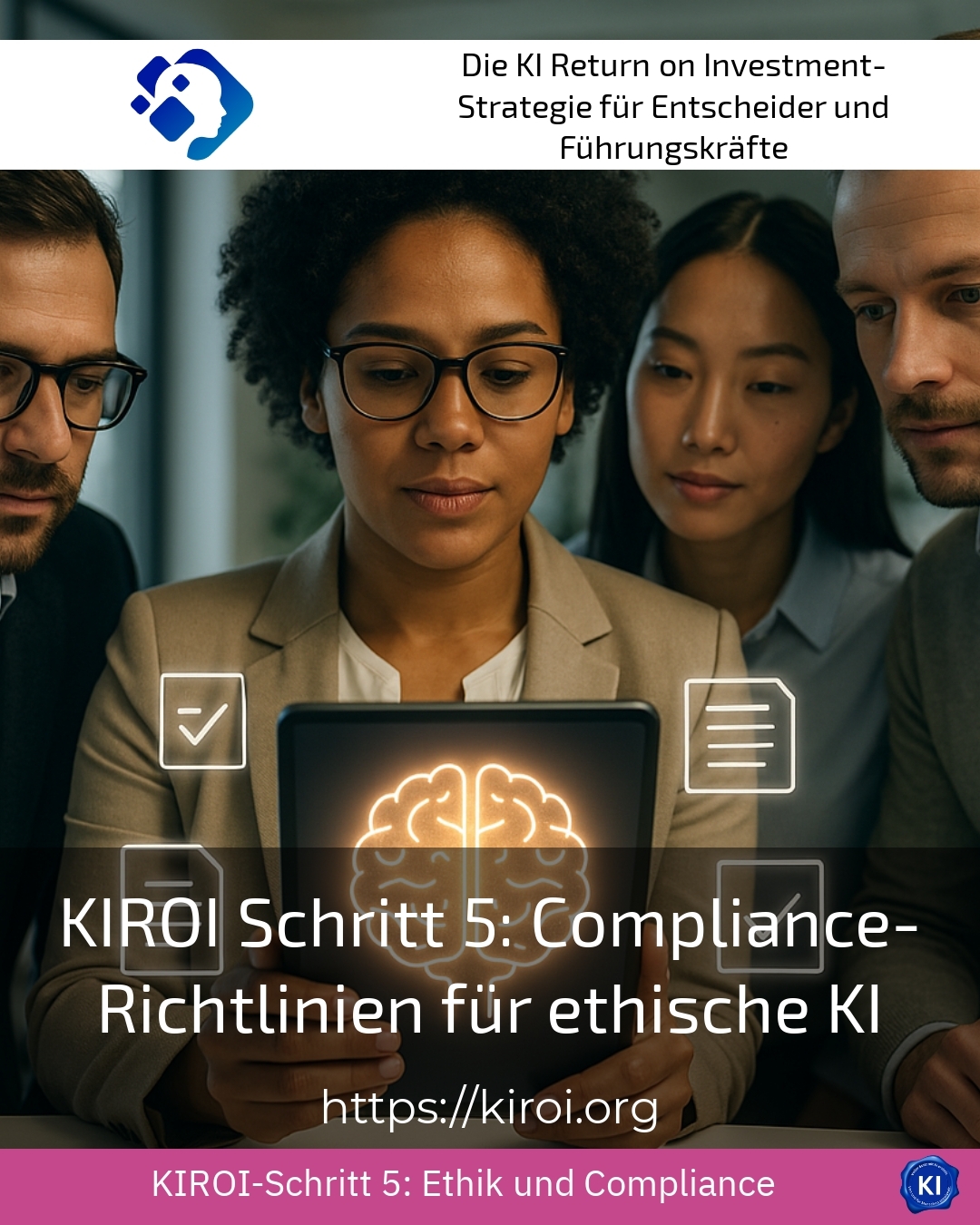Compliance guidelines are indispensable companions for companies that want to use artificial intelligence in an ethical and legally compliant manner. They create clear standards for the responsible use of AI systems and help to fulfil legal and ethical requirements. Compliance guidelines not only provide guidance when dealing with AI, but also form the basis for sustainable innovation.
Compliance guidelines - the foundation for ethical AI applications
In today's world, where AI technologies are developing ever faster, the aspect of compliance guidelines is becoming increasingly important. Companies in various industries often report that there are uncertainties when using AI, for example due to unclear legal requirements or ethical issues. Practice shows that compliance guidelines offer valuable support here by defining clear rules and responsibilities.
For example, banks rely on compliance guidelines to ensure transparency and traceability in high-risk AI systems, such as in lending or risk management. In the healthcare sector, they accompany the use of diagnostic systems to ensure data protection and patient safety. Compliance guidelines are also used in human resources to ensure that the use of applicant screening tools is non-discriminatory and traceable.
These guidelines not only define the legal framework, but also promote acceptance among employees and customers because they clearly communicate ethical guidelines and thus create trust.
Compliance guidelines - integration into company processes
To ensure the smooth and legally compliant use of AI, it is crucial that compliance guidelines are integrated into project planning at an early stage. In practice, it has been shown that interdisciplinary teams from the technology, legal and compliance departments can effectively organise the creation and implementation of these guidelines.
One company from the industrial sector reported that the involvement of compliance officers from the outset helped to make risks associated with the use of AI-controlled production processes transparent and to develop targeted countermeasures. At the same time, mandatory training for employees made it easier to comply with the guidelines in day-to-day operations.
Similarly, a telecommunications provider used compliance guidelines for handling customer data that is analysed using AI. The guidelines created a binding framework for data security and privacy protection.
Another practical case from the transport sector showed how compliance guidelines in dealing with AI-supported monitoring systems help to fulfil legal regulations and address ethical concerns at the same time.
BEST PRACTICE with one customer (name hidden due to NDA contract) The customer integrated compliance guidelines as an integral part of its AI projects. This enabled the team to create transparency with regard to the algorithms used and establish an active governance structure. Employees were specifically trained to recognise and mitigate existing risks at an early stage. Collaboration between IT, compliance and specialist departments also improved the continuous monitoring and adjustment of guidelines during ongoing operations.
Important components of compliance guidelines for AI
Compliance guidelines should include clearly defined roles and responsibilities to ensure that each department knows its responsibilities. This also includes appointing an AI compliance officer or an interdisciplinary committee to monitor compliance.
It also makes sense to take stock of all AI systems in use - including those that may turn out to be shadow AI. Standards for safe and ethical operation should then be implemented, whereby high-risk applications in particular should be considered separately.
Regular training for employees is also mandatory. This is the only way to raise awareness of compliance risks and responsible behaviour when dealing with AI.
Last but not least, mechanisms for the continuous review and adjustment of compliance guidelines are indispensable. Audits and monitoring help to recognise new risks at an early stage and adapt the guidelines to current legal requirements and ethical standards.
Compliance guidelines as a driver for sustainable success
Structured implementation of compliance guidelines makes a significant contribution to minimising liability risks for companies and strengthening the trust of customers and business partners. They are becoming increasingly important, particularly in light of the EU AI Regulation, which places strict requirements on the transparency, human control and security of AI systems.
Companies that establish compliance guidelines as an integral part of their AI deployment report that they can recognise security gaps in projects more quickly and respond to changes more efficiently. These practices create competitive advantages because they make innovation processes more secure and reduce regulatory uncertainties.
For example, one technology company showed that compliance guidelines made the entire development process for AI models traceable and verifiable. This not only facilitated the certification of the systems, but also promoted acceptance among end users.
Another example from the energy sector illustrates how the establishment of compliance guidelines helped to ensure adherence to extensive regulations and at the same time address ethical issues in connection with AI-driven consumption analyses.
My analysis
Compliance guidelines are indispensable for companies that want to use artificial intelligence responsibly. They provide important guidance by combining legal requirements and ethical standards. In this way, they support the management of risks and promote a culture of mindfulness and transparency.
Practical experience from various industries emphasises that compliance guidelines not only fulfil regulatory obligations, but can also promote innovation processes in the AI sector and improve acceptance among employees and customers. It is therefore advisable to continuously adapt compliance guidelines to the dynamic requirements of AI technologies at an early stage.
Further links from the text above:
AI and compliance - ki-kanzlei.de
AI regulation: What companies need to do now
Guidelines for the use of artificial intelligence in the federal administration
For more information and if you have any questions, please contact Contact us or read more blog posts on the topic Artificial intelligence here.















